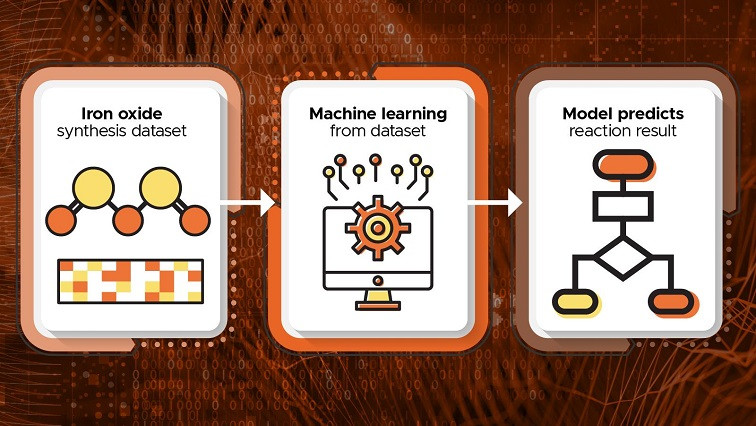Typically, researchers attempting to synthesize specifically targeted particles of materials have had to rely on intuition or trial-and-error methods. This approach can be inefficient, requiring significant time and resource investments. Researchers employed data science and machine learning (ML) techniques to help streamline synthesis development for iron oxide particles. The trained model can predict potential particle size and phase for a set of experimental conditions, identifying promising and feasible synthesis parameters to explore. Additionally, the ML-based approach highlighted the importance of pressure on the final reaction outcome. This variable has been generally overlooked in many iron oxide nanoparticle synthesis attempts.
ML and data science are powerful tools to help make science more efficient, but can be challenging to effectively integrate and use. Deep collaboration between synthesis experts and data scientists led to an algorithm that can effectively identify the outcome of iron oxide particle synthesis. This new approach represents a shift in the way that researchers can approach synthesis, leading to faster and more effective development of particles with selected sizes and phases.
Synthesizing iron oxide particles to achieve desired phases and sizes has conventionally relied upon intuition and a time-consuming trial-and-error methodology. To overcome the ambiguities of this approach, researchers harnessed the power of data science and ML techniques to address two pivotal issues: identifying feasible experimental conditions and foreseeing potential particle characteristics for a given set of synthetic parameters. This innovative approach represents a paradigm shift for metal oxide particle synthesis, potentially markedly economizing the time and effort expended on ad hoc iterative synthesis approaches.
By training the ML model on careful experimental characterization, the approach demonstrated remarkable accuracy in predicting iron oxide outcomes based on synthesis reaction parameters. The search and ranking algorithm yielded plausible reaction conditions to explore from the input dataset. It also revealed the previously overlooked importance of pressure applied during the synthesis on the resulting phase and particle size.
Read the original article on Pacific Northwest National Laboratory (PNNL).







